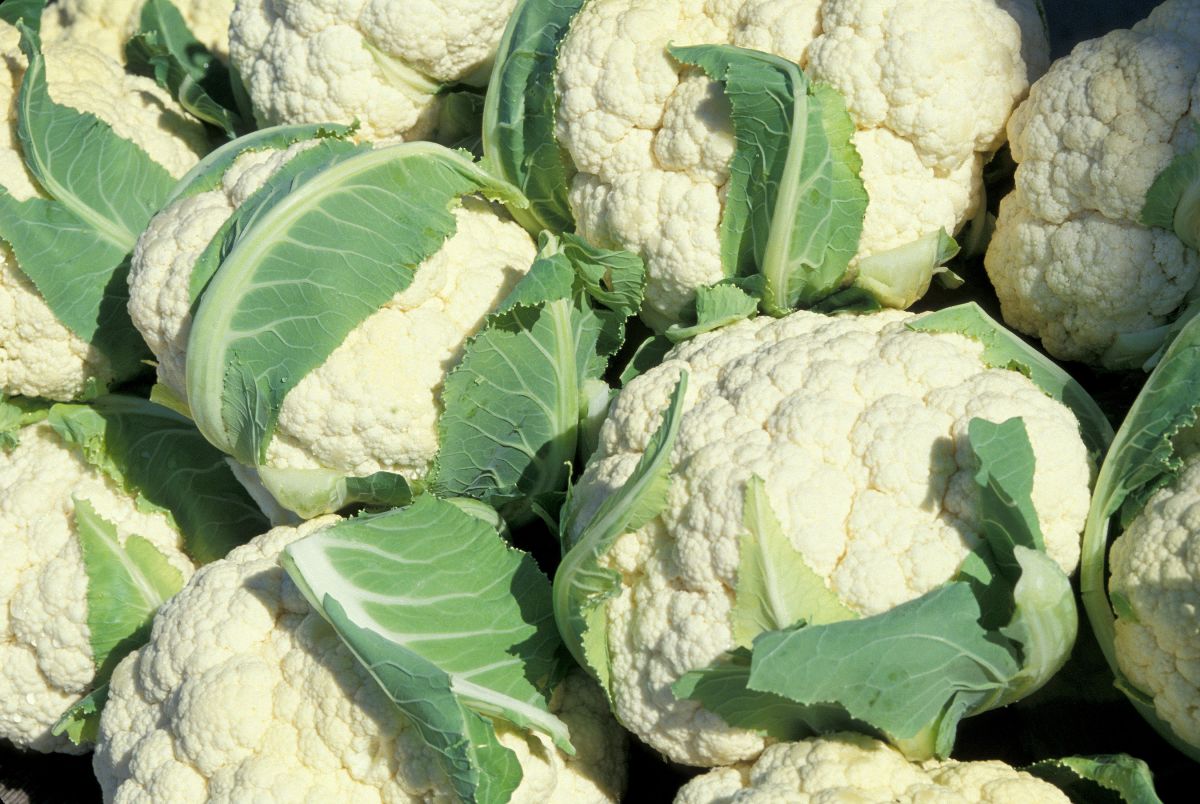Cauliflower
Cauliflower (Brassica oleracea) is a cool-season crop in the crucifer family. While it is closely related to broccoli and cabbage, cauliflower is more exacting in its environmental requirements than other cole crops. Cauliflower is very sensitive to unusually hot weather, temperatures that are too low, and drought. It is also subject to black rot and other diseases.
Marketing
 Only fall cauliflower crops appear to have potential for commercial fresh market sales. The U.S. per capita use of fresh cauliflower was between 1½ and 2 pounds in 2016, representing a modest increase after remaining at 1.2 to 1.3 pounds from 2010-14. Cauliflower use benefits somewhat from trends using vegetables to replace carbohydrates, such as mashed cauliflower for mashed potatoes. Direct marketers may find niche markets for specialty cauliflower varieties, including green, orange and purple by emphasizing the increased nutritional content of these colored varieties. Romanesco is not cauliflower or broccoli, though it has the texture of cauliflower and the flavor of broccoli.
Only fall cauliflower crops appear to have potential for commercial fresh market sales. The U.S. per capita use of fresh cauliflower was between 1½ and 2 pounds in 2016, representing a modest increase after remaining at 1.2 to 1.3 pounds from 2010-14. Cauliflower use benefits somewhat from trends using vegetables to replace carbohydrates, such as mashed cauliflower for mashed potatoes. Direct marketers may find niche markets for specialty cauliflower varieties, including green, orange and purple by emphasizing the increased nutritional content of these colored varieties. Romanesco is not cauliflower or broccoli, though it has the texture of cauliflower and the flavor of broccoli.
Production

While poorly drained soils should be avoided, slightly rolling land is suitable. Cauliflower requires high magnesium levels and a pH of 6.5 or higher. This crop will do well on ground that has been in tobacco; however, avoid fields that have previously been in other cole crops for the past three to five years. Crop spacing can greatly affect head size; a closer spacing results in smaller heads. It is important to remember that although large heads of cauliflower are attractive and may be preferred by retail customers, wholesalers may prefer small, compact heads.

